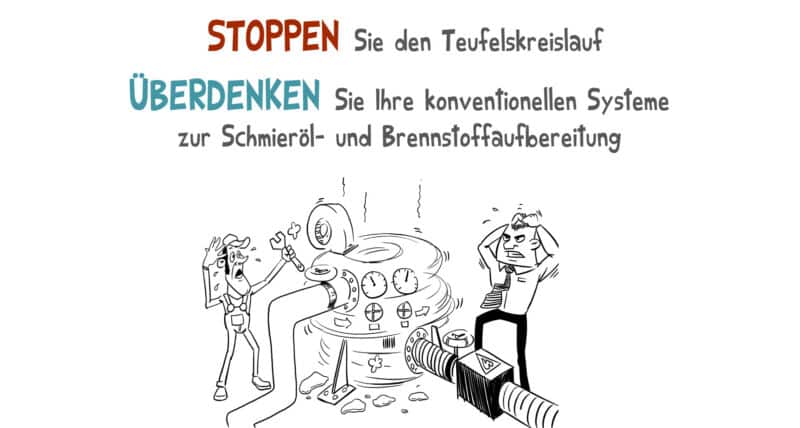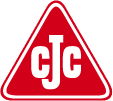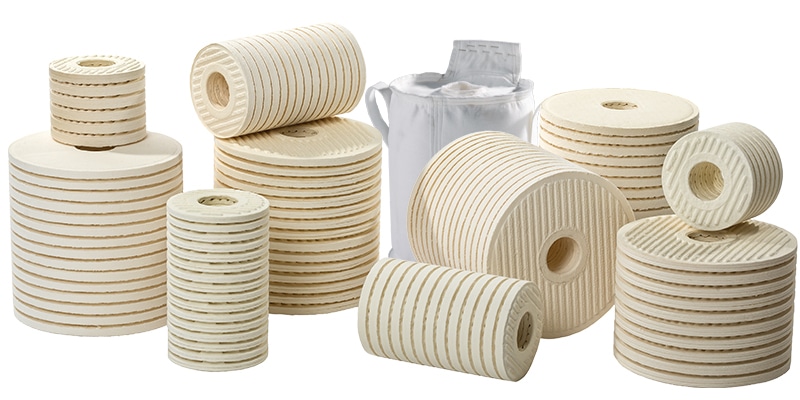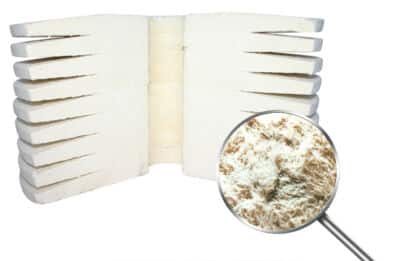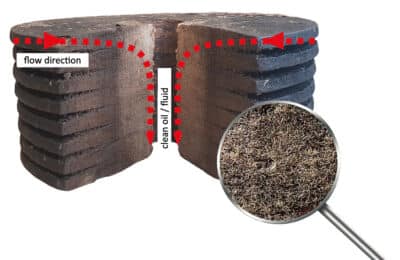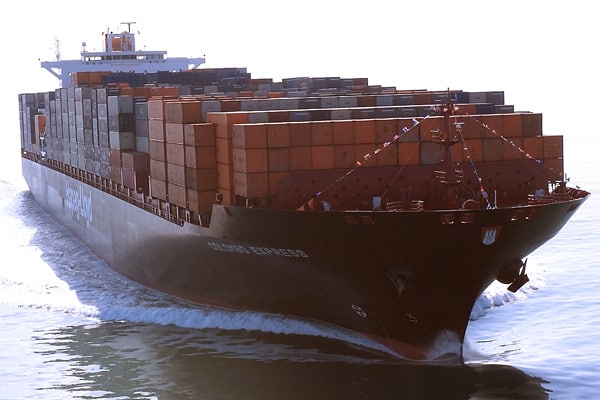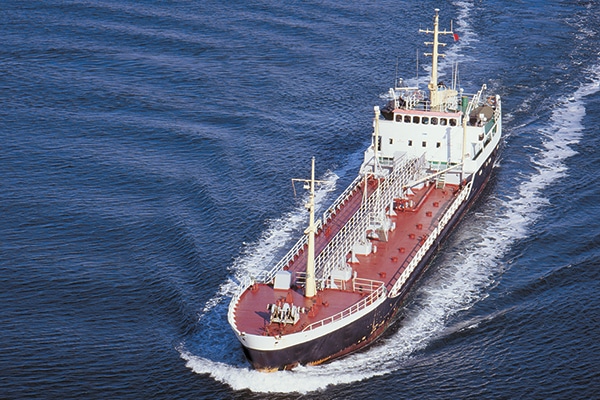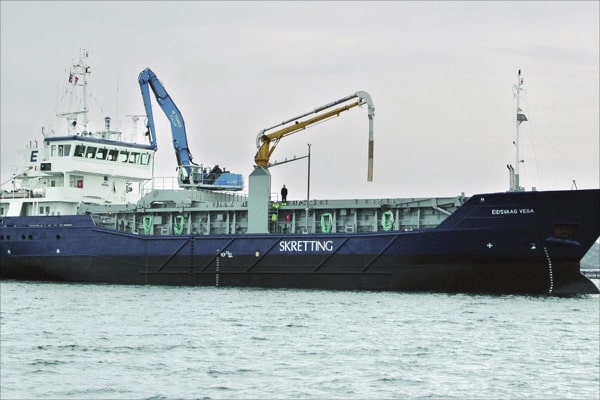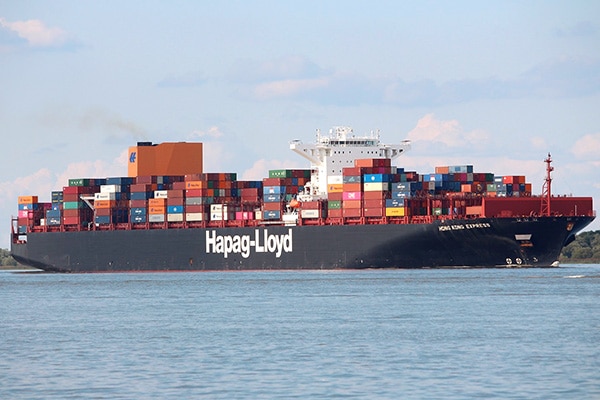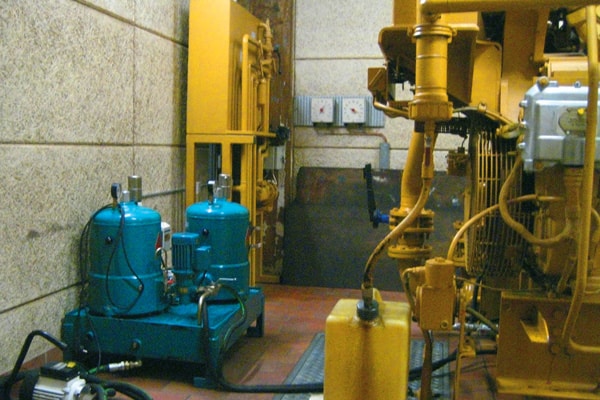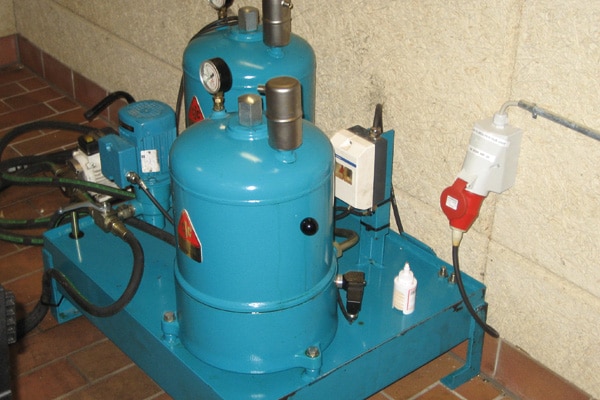Maximize oil cleanliness: So you protect the engine, budget and resources
Lube oil filters from CJC®: Your solution for marine and industrial gas engines and diesel engines

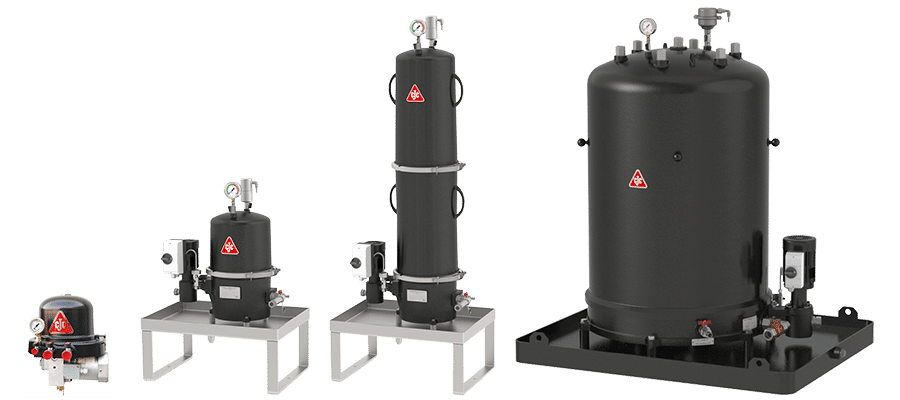
Lube oil filters for gas engines and diesel engines
Lube oil filters from CJC® clean, dry and maintain the lubricating oil in your engines quickly and cost-effectively. Whether diesel engine or gas engine, whether what fuel — clean natural gas, diesel, gas oil or special fuels such as heavy fuel oil, landfill gas and distillates — lube oil filters from CJC® are precisely configurable to the specific conditions of your engine and the impurities in your engine oil. Installed directly on the oil pan (sump) in an offline circuit, they ensure maximum engine oil cleanliness, which meets and even exceeds the requirements of engine manufacturers, regardless of the engine’s operation. Oxidation residues, acids, wear particles, soot and suspended solids, as well as water — free, emulsified and dissolved — are removed easily, efficiently and cost-effectively.
How you benefit from installing a CJC® Lube Oil Filter on your engine
Product Advantages — CJC® Lube Oil Filters

Customized solutions
Perfectly adaptable to any engine and engine oil. The CJC® Lube Oil Filter is individually configurable, thanks to its modular design. Optionally with customer-specific sensors for integration into your condition monitoring system.
Maximum oil cleanliness
Highest engine oil cleanliness and a clean engine. The CJC® Lube Oil Filter removes all impurities – regardless of operation, continuously and highly efficiently. For maximum service life of oil filling, components and engine.

Economical & ecological
Depth filter made of 100% natural fibers — 0% plastic and 0% metals. High absorption capacities and thus long filter life ensure the excellent price-performance ratio of the CJC® Lube Oil Filters.

Easy installation & maintenance
Easy to install in an independent circuit — as an offline filter directly on the oil pan. This also means changing filters without engine failure. Low-maintenance, robust and durable, the CJC® Lube Oil Filter also convinces.
Product Features — CJC® Lube Oil Filters
The latest generation of lube oil filters revolutionizes the maintenance of lube oil in gas engines and 2- and 4-stroke marine diesel engines. Even higher cleanliness classes, lower consumption of filter inserts, and even higher pump flow rates enable installation on even larger motors. In close cooperation with engine manufacturers and operators, we have developed special CJC® Fine and Depth Filter Inserts for the specific impurities in the engine oil of gas engines and diesel engines and optimized them for these applications.
Modular design — Filter sizes:
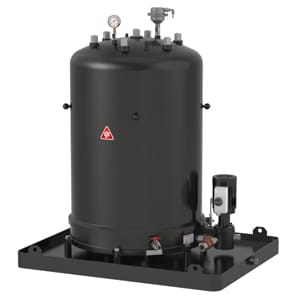
Installation: in an offline circuit at the oil pan (sump)
Operating pressure: max. 2 bar
Power consumption: 0.25—5 kW
Motor voltage: AC / DC
Dirt holding capacity: up to 56 kg
Water absorption capacity: 25.2-36.4 l
Optional: special filter inserts to increase acid neutralization
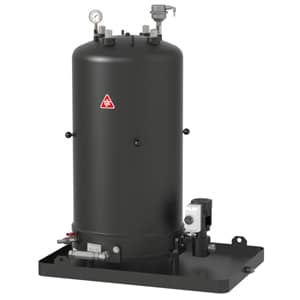
Installation: in an offline circuit at the oil pan (sump)
Operating pressure: max. 2 bar
Power consumption: 0.18-2.2 kW
Motor voltage: AC / DC
Dirt holding capacity: up to 32 kg
Water absorption capacity: 14.4-20.8 l
Optional: special filter inserts to increase acid neutralization
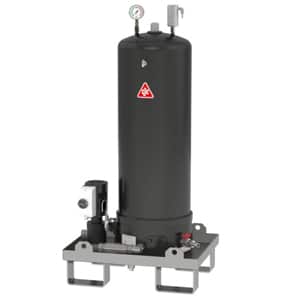
Installation: in an offline circuit at the oil pan (sump)
Operating pressure: max. 2 bar
Power consumption: 0.12—0.37 kW
Motor voltage: AC / DC
Dirt holding capacity: up to 15 kg
Water absorption capacity: 3.4-9 l
Optional: special filter inserts to increase acid neutralization
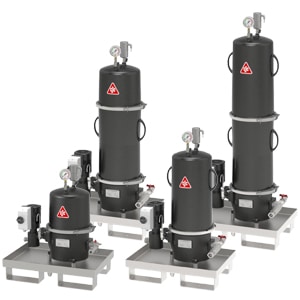
Installation: in an offline circuit at the oil pan (sump)
Operating pressure: max. 2 bar
Power consumption: 0.12-1.1 kW
Motor voltage: AC / DC
Dirt holding capacity: 2—8 kg
Water absorption capacity: 0.9-5.2 l
Optional: special filter inserts to increase acid neutralization
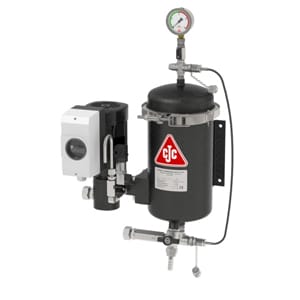
Installation: in an offline circuit at the oil pan (sump)
Operating pressure: max. 2 bar
Power consumption: 0.12—0.18 kW
Motor voltage: AC / DC
Dirt holding capacity: approx. 1.1 kg
Water absorption capacity: 400-600 ml
Optional: special filter inserts to increase acid neutralization
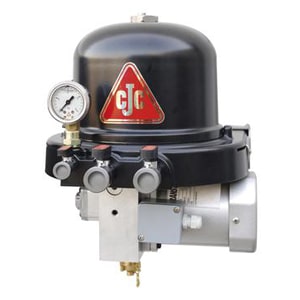
Installation: in an offline circuit at the oil pan (sump)
Operating pressure: max. 2 bar
Power consumption: 0.06 kW
Motor voltage: AC / DC
Dirt holding capacity: approx. 550 g
Water absorption capacity: 220—250 ml
Optional: special filter inserts to increase acid neutralization
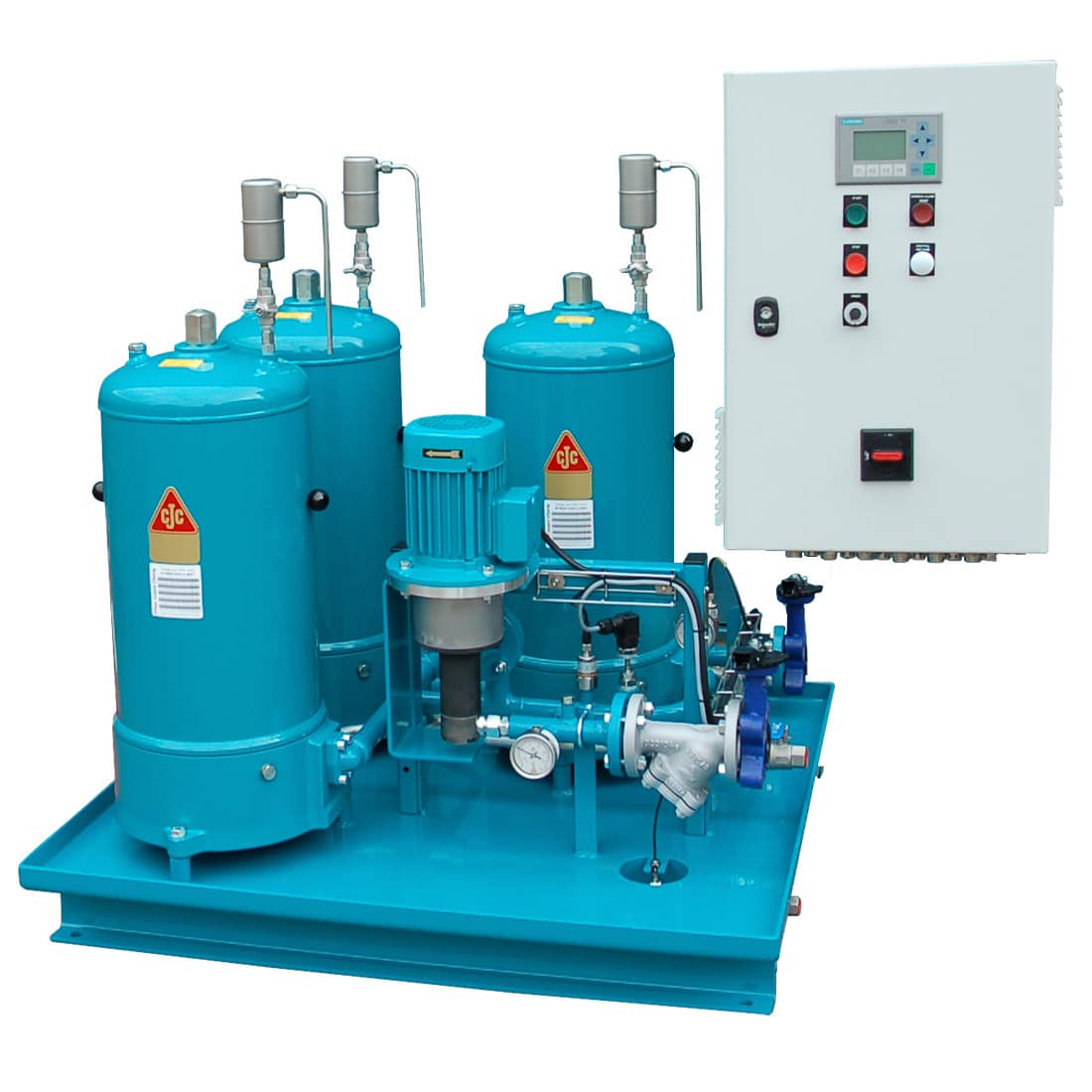
Installation: in an offline circuit at the oil pan (sump)
Operating pressure: max. 2 bar
Power consumption: 0.18—0.90 kW
Motor voltage: AC / DC
Number of filter housings: 1 to 3 in sizes 27/54 to 427/108
Dirt holding capacity: 4—72 kg
Water absorption capacity: 1.8-32.4 l
Optional: special filter inserts to increase acid neutralization
Filter inlet/outlet: DN25
Equipment:
Standard:
- Pump unit for installation in the offline circuit at the oil sump
- Integrated depth filter insert for maximum recording capacities
- Sampling point for oil analysis
- Pressure switch for monitoring the degree of saturation of the filter insert
- Automatic bleeding and venting valve or continuous air vent for quick filter insert replacement
- Motor protection switch with integrated ON/OFF switch
- Non-return valve to avoid a return flow
- Base plate for easy handling
Marine version — optional equipment:
- Electrical control incl. leakage sensor, remote start-stop
- Temperature-controlled control of the flow rate
- Valve for by-pass filtration in case of emergency
- Continuous air vent
- Independent placement of the pump unit and electrical control for flexible integration into your engine room
Optional:
- Electrical control
- Leakage sensor as a warning system in case of engine oil leakage
- Preheater for particularly highly viscous engine oils
- Pre-filters for large solid impurities
- Sensors for condition monitoring of oil and engine condition
- Drain tank
The integrated depth filters for efficient lube oil care
Separation capacity:
- Oxidation residues (varnish, sludge)
- Acids
- Wear particles, soot and insoluble
- Water – free, emulsified and dissolved
Type of filtration:
- Depth filter with extremely high recording capacity
Inner surface:
- 120—150 m² per gram
- The largest depth filter insert has an internal surface of > 2,066 ha = > 2,894 football fields
- The smallest depth filter insert has an inner surface of > 5 ha = > 7 football fields
Due to the modular design, the number of various depth filter inserts and thus the holding capacity can be adapted to the individual dirt input.
Volume:
- The largest depth filter insert has a volume of > 504 Litres
- The smallest depth filter insert has a volume of > 1.5 Litres
Filtration degree:
- 3 µm absolute, retention rate down to 1 µm (Micrometer)
Filter material:
- 100% natural fibres – meets the requirements of the Circular Economy Act
In the case of engine oil, which is prone to acidification quickly, an additional filter material may be used, which increases the acid neutralization many times over.
Customer cases
Find out in our application studies how operators benefit from installing a CJC® Lube Oil Filter.
“The CJC® Lube Oil Filters […] reliable and efficient alternative […]. […] engine lube oil properties were maintained in specified areas (viscosity, additives, TBN, particle and water content) or improved (e. g. dispersancy). The high savings potential regarding lube oil losses, energy costs and CO2 emissions are convincing […].“
“Our experiences with operation and filter replacement are excellent! We have weight the used filter insert. The drained net weight among 49.2 kg – i. e. in total, the CJC® Oil Filter >removed 38 kg dirt. The engine lube oil on the test membrane is brown and not black anymore! The CJC® Oil Filter is really efficient :)!”
“We have only had positive experiences with the CJC® Oil Filters. The quality of the oil is as good as before, in every respect actually even better. The appearance of the oil changed from dark to light and corresponds to that of new oil. We save man-hours and chemicals used to clean the centrifuge and have less clutter in the engine room. Also, no sludge is produced during filtration. The centrifuge feeds out every hour. Displacement water/rinsing water is used for cleaning. The oil loss caused by centrifugation contaminates the water. The resulting sludge consists of about 0.2 liters of oil (oil loss) and about 2.5 liters of water (cleaning) and is discharged directly into the sludge tank. With 8,700 outlets per year, this is about 1,740 liters of oil and about 21,750 liters of water. The costs for the disposal of this amount of sludge amount to approx. 2,013 EUR/year. In addition, lubricating oil consumption is reduced. This is because the oil loss that occurs during centrifugation and in the event of failures or malfunctions amounts to about 2,500 to 3,000 liters per year. At a price of 1.34 EUR per litre, this brings us a saving of about 3,356 to 4,027 EUR/year. All around a good investment and if we do not switch to electric drive, we will definitely install oil filters on the DG1 and DG2 engines as well.”
“I can only recommend the installation of CJC® Lube Oil Foil filters — it’s hard to believe how much dirt a single cartridge can hold.”
“I already had a filter for diesel filtering on the old ship (also Shenandoah) and was always satisfied with it. For my new building I really wanted to have a CJC® system again. For even better engine care, I also decided to clean the lubricating oil with a CJC® fine filter!”
“The filter system and the oil analyses fully convinced me! The oil was still bright and clear after > 700 running hours. The injection nozzles are also much cleaner! The improved oil purity not only extends the service life, but also protects the engine components even better against wear and contamination/deposits!”
“The difference between oil condition before and after installation of the CJC® Lube Oil Filter is clearly visible — the color of the oil is again a bit more golden. The biggest challenge with centrifuges is that they feed out a lot of oil sludge ( sludge). Although the sludge consists of 90-95% water, the disposal of this sludge as well as the operation of the centrifuge is very expensive.”
“I recommend leaving our lubricating oil centrifuges on land and purchasing more CJC® filters for the remaining engines. The advantage of this is that we no longer need to use the centrifuges and thus have considerable cost and time savings. According to a rough estimate, the use of these two lubricating oil centrifuges produces 280 m³ of sludge per year (8 l of sludge per change, 4 changes per hour). Part of the sludge is made of lubricating oil, which means that we can also significantly reduce lubricating oil consumption. The disposal of the sludge also incurs high costs — for spare parts for the incinerator and the bilge water system, diesel for the combustion process — which we are now saving. Not to mention the positive impact on the environment — as an extra bonus.”
Technical Inspector:
“I worked for many years as a senior engineer on ships and had good experiences with CJC® filters, so I was not surprised by the good result. We will now also install similar CJC® filters on the other 3 engines of the Bourbon Mistral, as well as on the 4 engines of the sister ship M/S Bourbon Monsoon.”
“It all looks promising. If the service life of the filter cartridge is one year, the running costs are significantly lower than with the centrifuge. I would also like to mention that maintenance times will be reduced. I think the photos speak for themselves…”
“In conjunction with the results obtained, it becomes clear that the use of a CJC® Lube Oil Filter extends the service life of the oil. Texaco’s analyses showed a reduction in iron content from 16 ppm to 5 ppm. The service life of the fine filter cartridge was shorter than expected, but this was due to the low utilization of the engine and the resulting high soot load.”
Write or call your regional contact person now
Do you have any questions about our lubricating oil filters, rental-purchase options or engine oil care in general? Is your engine oil exceptionally heavily loaded, and you do not know whether the oil can be cleaned cost-effectively? This is exactly what our regional contacts will find out together with you. Just call or e-mail.
CJC® Lubricating Oil Filter vs Centrifuges
Due to the enormous savings potential in terms of operating and energy costs, and the lower lubricating oil losses, the CJC® Lube Oil Filter amortizes within the first two years of operation despite the additional installation costs when retrofitting and replacing the centrifuge.
